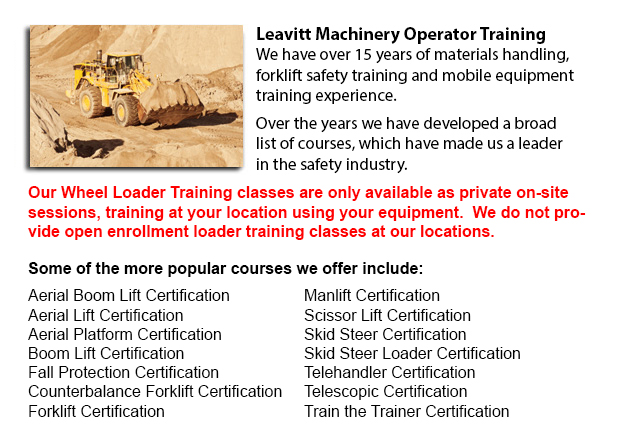
Lift trucks are obtainable in several different units that have different load capacities. Nearly all typical forklifts utilized in warehouse settings have load capacities of 1-5 tons. Bigger scale units are used for heavier loads, like for example loading shipping containers, can have up to 50 tons lift capacity.
The operator could use a control to lower and raise the tines, which are likewise referred to as "tines or forks." The operator could even tilt the mast in order to compensate for a heavy load's propensity to angle the blades downward to the ground. Tilt provides an ability to work on rough ground as well. There are yearly contests for skilled lift truck operators to compete in timed challenges as well as obstacle courses at regional forklift rodeo events.
General operations
Lift trucks are safety rated for cargo at a specific limit weight and a specified forward center of gravity. This very important information is supplied by the manufacturer and positioned on a nameplate. It is important loads do not go beyond these specifications. It is against the law in lots of jurisdictions to interfere with or take out the nameplate without getting permission from the lift truck maker.
The majority of forklifts have rear-wheel steering in order to improve maneuverability. This is very effective within confined areas and tight cornering spaces. This particular type of steering varies fairly a little from a driver's first experience together with various motor vehicles. Since there is no caster action while steering, it is no necessary to use steering force in order to maintain a constant rate of turn.
Instability is one more unique characteristic of forklift use. A constantly varying centre of gravity takes place with each movement of the load amid the lift truck and the load and they must be considered a unit during operation. A forklift with a raised load has gravitational and centrifugal forces that could converge to bring about a disastrous tipping mishap. In order to prevent this possibility, a forklift should never negotiate a turn at speed with its load elevated.
Lift trucks are carefully designed with a specific load limit intended for the tines with the limit decreasing with undercutting of the load. This means that the freight does not butt against the fork "L" and will lower with the rise of the blade. Usually, a loading plate to consult for loading reference is situated on the forklift. It is dangerous to make use of a forklift as a personnel hoist without first fitting it with certain safety tools such as a "cage" or "cherry picker."
Forklift utilize in distribution centers and warehouses
Vital for any warehouse or distribution center, the lift truck needs to have a safe environment in which to accommodate their efficient and safe movement. With Drive-In/Drive-Thru Racking, a forklift has to travel within a storage bay which is many pallet positions deep to put down or take a pallet. Operators are usually guided into the bay through rails on the floor and the pallet is positioned on cantilevered arms or rails. These confined manoeuvres require skilled operators in order to carry out the task safely and efficiently. Because each and every pallet needs the truck to enter the storage structure, damage done here is more frequent than with other types of storage. If designing a drive-in system, considering the dimensions of the blade truck, along with overall width and mast width, have to be well thought out to be able to be certain all aspects of an effective and safe storage facility.
-
Crane Certification Scottsdale
Crane Certification Scottsdale - The Crane Certification Program consists of the industry suggested subject matter that would teach the efficient and safe operation of cranes. The person would train in the following: pre-operational, operational and... More -
Heavy Equipment Operator Training Scottsdale
Heavy Equipment Operator Training Scottsdale - Heavy equipment operator training facilities that provide good standards within the business, offering field performance tasks and additional equipment training are really sought after training features.... More -
Heavy Equipment Training School Scottsdale
Heavy Equipment Training School Scottsdale - HEO or the heavy equipment operator courses would provide you with the skills and knowledge required so as to enter the workforce as an entry level heavy equipment operator. In this twelve week course plus... More -
Crane Operator Classes Scottsdale
Crane Operator Classes Scottsdale - For the operators and the supervisors, current and new, the crane operator training course is suitable for all. Course content deals with applicable federal, provincial and state safety regulations. The training's... More -
Forklift Operator Certification Scottsdale
Forklift Operator Certification Scottsdale - Certification for forklifts are required to guarantee the safe operation of forklifts for those employers in warehouse, construction and industrial environments. The training needs to involve a method of e... More -
Crane Training Schools Scottsdale
Crane Training Schools Scottsdale - Our different programs for Mobile Crane Operation are meant for skilled operators who needs certification or re-certification, and for inexperienced people who are searching for their very first job as an operator... More -
Aerial Boom Lift Training Scottsdale
Aerial Boom Lift Training Scottsdale - Aerial Boom Lift Training is necessary for any individual who supervises, operates or works near boom lifts. This particular type of aerial lift or aerial work platform is utilized for lifting individuals, mater... More -
Telehandler Training Scottsdale
Telehandler Training Scottsdale - Telescopic handlers often known as telehandlers for short, are an extremely popular piece of heavy construction equipment. They are widely used in the construction and agricultural industries. These equipments have f... More

Forklift Training Scottsdale
TOLL FREE: 1-888-254-6157
Scottsdale, Arizona
forkliftcertificationscottsdale.com
Email Us
About Us


